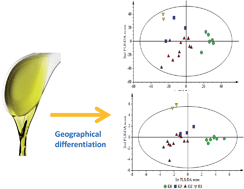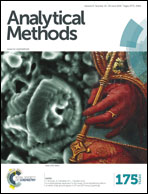Geographical differentiation of a monovarietal olive oil using various chemical parameters and mid-infrared spectroscopy
Abstract
Increased demand for monovarietal olive oils from local olive varieties with unique characteristics as well as regulations such as ‘Protected Designation of Origin’ makes it necessary to identify methods for geographical classification of this product. Geographical differentiation of olive oils from a local olive variety from nine distinct locations of a peninsula in the west part of Turkey is investigated by using mid-infrared spectroscopic data and several chemical parameters (total phenol content, fatty acid and phenol profile, total carotene and chlorophyll content and oxidative stability). The best differentiation with respect to geographical origin was obtained with partial least square-discriminant analysis (PLS-DA) of a combination of various chemical parameters. The fatty acid profile also provided good separation of geographic locations and was slightly better than mid-infrared analysis. The best separation was achieved with respect to palmitic, oleic and linoleic acid contents of olive oils. However, mid-infrared spectroscopy with the advantages of being environmentally friendly, cost effective and a fast method could also be used to differentiate monovarietal olive oils with respect to their growing locations by factors such as micro-climates, proximity of regions and position to the sea.


 Please wait while we load your content...
Please wait while we load your content...